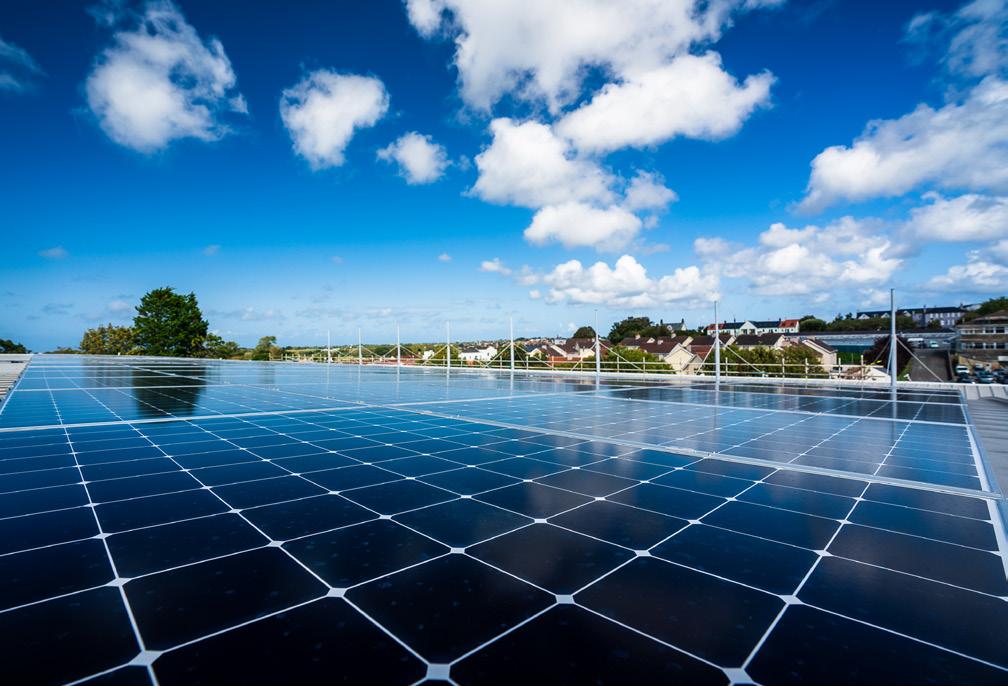
3 minute read
Renewable Energy
Building a greener energy supply
With the installation of the largest solar photovoltaic system in the Channel Islands complete, Guernsey Electricity is looking for further opportunities to develop this source of renewable energy for the islands. We spoke to their head of asset management, Stuart Blondel, to find out more about the potential for this type of energy generation in Guernsey.
Advertisement
THIS IS A WAY THAT COMPANIES CAN USE AN UNDERUTILISED ASSET, THEIR ROOF, TO GENERATE LOCAL RENEWABLE ENERGY. IT IS EASIEST TO INSTALL PANELS DURING A BUILDING’S CONSTRUCTION RATHER THAN RETRO FIT THEM, SO THAT IS DEFINITELY WORTH BEARING IN MIND DURING THE EARLY STAGES OF A PROJECT.
The project to install solar photovoltaic (PV) panels on the roof of Guernsey Post’s headquarters was the largest of its kind in the Channel Islands. The second largest project is the one on the roof of Guernsey Electricity’s own power station, so the utility company is certainly leading the way when it comes to this type of renewable energy in the islands.
The 654 PV panels installed on the roof of Envoy House will produce more than 200,000kWh each year, which is equivalent to the electricity required to power Guernsey Post’s fleet of 82 electric vans with some energy to spare. All electricity generated will be supplied to Guernsey Electricity for the grid, so all local customers will access locally produced solar energy.
For head of asset management at Guernsey Electricity, Stuart Blondel, the timing is right for the company to be investing in this type of project.
“We are now at a stage with the technology where we are broadly at grid parity, meaning that the energy cost of this type of power is comparable to what we can access elsewhere. We have to balance the benefits to the environment and the community with what is commercially viable, and a project of this scale meets the criteria.
“A rooftop the size of Envoy House has the scale that we require, so the costs associated with undertaking a project can be absorbed by the size of it. We see that as the way solar PV can be a useful, cost-effective part of our energy system.”
Guernsey Electricity say that they are now exploring a number of opportunities for further projects in the island, including early discussions regarding the roof of the Princess Elizabeth Hospital. But, according to Stuart, there are logistical difficulties which extend beyond the size of the roof space. “Having the right scale is important, but so is the building’s location in relation to the power grid. The PVs that are generating the electricity need to be as close as possible to the grid so we are not wasting that energy sending it back up the grid.
“We’ve got a big pipeline of opportunities that we’re exploring and it’s an area that we are keen to develop and grow. We would love to pursue further large-scale PV projects, where we have the scale and location to make them commercially viable.”
The team at Guernsey Electricity say they often have people asking how they can help the island move towards more renewable sources of energy, so Stuart is keen to encourage companies to consider partnering with the utility.
“This is a way that companies can use an underutilised asset, their roof, to generate local renewable energy. It is easiest to install panels during a building’s construction rather than retro fit them, so that is definitely worth bearing in mind during the early stages of a project. You also need to consider issues such as the orientation for solar panels as pitched roofs obviously need to face in the right direction to be suitable for PV panels.”
Any solar arrays installed in a project such as the one at Guernsey Post remain under Guernsey Electricity’s ownership. The electricity they generate is then fed into the grid for all customers to benefit from the local renewable energy - at less cost to the environment, but no more cost to the consumer.










